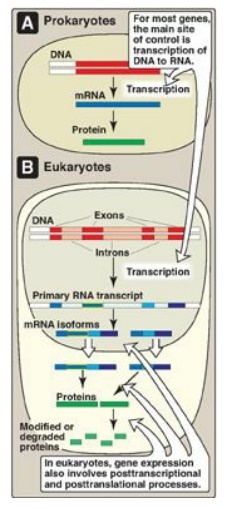Regulation of Gene Expression
| Home | | Biochemistry |Chapter: Biochemistry : Regulation of Gene Expression
Gene expression refers to the multistep process that ultimately results in the production of a functional gene product, either ribonucleic acid (RNA) or protein.
Regulation of Gene Expression
OVERVIEW
Gene expression refers
to the multistep process that ultimately results in the production of a
functional gene product, either ribonucleic acid (RNA) or protein. The first
step in gene expression, the use of deoxyribonucleic acid (DNA) for the
synthesis of RNA (transcription), is the primary site of regulation in both
prokaryotes and eukaryotes. In eukaryotes, however, gene expression also
involves extensive posttranscriptional and posttranslational processes as well
as actions that influence access to particular regions of the DNA. Each of
these steps can be regulated to provide additional control over the kinds and
amounts of functional products that are produced.
Not all genes are
regulated. For example, genes described as constitutive encode products
required for basic cellular functions and so are continually expressed. They
are also known as “housekeeping” genes. Regulated genes, however, are expressed
only under certain conditions. They may be expressed in all cells or in only a
subset of cells, for example, hepatocytes. The ability to regulate gene
expression (that is, to determine if, how much, and when particular gene
products will be made) gives the cell control over structure and function. It
is the basis for cellular differentiation, morphogenesis, and adaptability of
any organism. Control of gene expression is best understood in prokaryotes, but
many themes are repeated in eukaryotes. Figure 32.1 lists some common
strategies employed in gene regulation.

Figure 32.1 Control of gene
expression. mRNA = messenger RNA.
Related Topics
